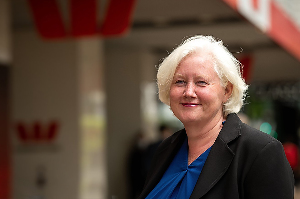
A new survey by property data and analytics company CoreLogic gives a detailed insight into the country’s established problem of home underinsurance amid high construction cost inflation, rising insurance premiums, and wider cost of living pressures.
The survey found:
- Almost a third (30%) of respondents are not confident their property is adequately insured, with 91% believing this is due to a lack of knowledge.
- One quarter (26%) of respondents with complete rebuild cover are not confident they are fully insured for the rebuild of their home.
- More than one third (38%) of respondents don’t know what their sum insured amount on their policy is.
- The average New Zealand homeowner last reviewed their home insurance cover nearly 2.5 years ago.
- Despite one in 10 (8%) respondents selecting their current insurance because of low excess, only two thirds (65%) know what their insurance excess amount is.
CoreLogic country manager Simone Moors says while having a high home insurance rate of 96-98% across the market is a good thing, it may be buttressing a false sense of protection.
“People are paying for insurance, but if the sum insured is insufficient for the cost of rebuild, they are not fully covered and may only find out about this at the worst possible time.”
Moors says even the most risk-averse consumers can be underinsured quickly. “This plays into the confidence issue identified in the survey, with lack of understanding about rebuild/construction costs (69%) or the cost of a rebuild (64%) being the two most common reasons why respondents don’t feel confident their property is adequately insured.
She says this is not only a risk to the consumer, but for mortgaged homeowners there is a hidden risk sitting on New Zealand banks’ balance sheets.
CoreLogic’s Cordell Construction Cost Index for the third quarter of this year shows the indexed cost to build a standard 200m2 three-bedroom, two-bathroom single storey brick and tile house rose 3.4% over the quarter, lifting annual growth to 9.6%, the biggest increase since the index began in late 2012.
Moors says while about three in five (63%) investors and homeowners are insuring their property based on an “official” or recommended method (a calculator on an insurer’s website, or a rebuild estimate or insurance valuation from a registered valuer or quantity surveyor), 22% used the average property value in the area to decide how much they needed to insure their property for, while 12% are basing it on a “best guess”.
“Those surveyed believe over the past 12 months the cost of building a new home has increased by an average of 45% with about one third (36%) believing it has increased by more than 50%.”
Despite respondents believing property values rose 31% and rebuilding costs increased by 41% in the past 12 months, more than half (56%) haven’t reviewed their home insurance cover in the last year, putting them at risk of underinsurance, says Moors.
Weather effects
CoreLogic insurance solutions head Matthew Walker says a big problem is the increasing occurrence and intensity of weather events connected to climate change and rising construction costs.
“Coupled with the ongoing risk of earthquake, the survey’s data and insights indicate many insurance policyholders are highly exposed, most of them unwittingly – not just to the loss of their home but to serious financial harm, given that for most homeowners their property represents the bedrock of their wealth.
Rebalancing home insurance
A CoreLogic white paper insurance problems explores and quantifies this insurance gap and identifies possible solutions for insurers, their partners, and all those who are connected to or invested in the residential property sector. Walker says the research, insights and solutions can be applied to rebalance home insurance policies at a consumer level, inform insurer strategies to support policyholders, and contribute to closing the underinsurance gap.
Further findings from the insurance survey include:
- Almost half (49%) of New Zealand homeowners who reviewed their home insurance typically increase their insurance when they review their level of cover, while 40% of respondents leave it unchanged and 2% reduce it.
- Men are more likely to increase their level of cover when they review it than women (male 53%; female 43%), while baby boomers are the generation most likely to increase their level of cover when they review it (61%; national average 49%).
- More than half (52%) of respondents used the guidance provided by their insurer when taking out their policy to determine the sum insured or total build replacement cover.
- Millennials are most likely to use the guidance provided by their insurance provider (57%; gen Z 47%; gen X 49%; baby boomers 52%).
- More than half (52%) of respondents looked at the current market value of their property when deciding on their level of cover, while 24% took into account their current income/budget and 11% recent environmental factors.
- One in six (17%) New Zealand homeowners just automatically renew their cover.


